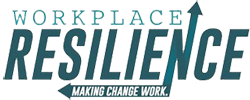 Recently, I have perfected a new skill. My cat was diagnosed with diabetes in December and I now must administer insulin injections twice a day. At first, I was amazed at the way that Joey wasn’t even fazed by this new routine that we shared morning and night. Since he likes attention, he seemed pleased that I was interested in spending time with him. However, after a couple months, everything began to change.
Recently, I have perfected a new skill. My cat was diagnosed with diabetes in December and I now must administer insulin injections twice a day. At first, I was amazed at the way that Joey wasn’t even fazed by this new routine that we shared morning and night. Since he likes attention, he seemed pleased that I was interested in spending time with him. However, after a couple months, everything began to change.
I would walk downstairs to find him for his 7am shot, and he would be nowhere to be found. That might not sound unusual for a cat, but before this point, he would come running to see what I wanted. But now we had started a new routine. I would call out his name and he wouldn’t respond. I would keep saying his name while I searched and searched under every piece of furniture in the house. I would run up and down the stairs like a crazy person, frantically calling his name, and looking at every possible hiding place. I would become distressed knowing that this cat was controlling my world, making me late for work.
Eventually, I would find him, just strolling into a room like he hadn’t heard me calling for him for the last 30 minutes. And when I finally gave him his shot, he would flinch and give a guttural cry. Sometimes, when he would see me walking toward him, he would back away and scamper off in a different direction.
He was on to me-I represented pain.
Joey is no different than you or me. Over the course of years, you have come to experience situations that cause you pain or make you uncomfortable. You have learned to avoid these experiences, which sometimes is good for you, and other times, gets in the way of you moving forward. For example, learning to not touch the stove when it’s hot, makes sense. You learned this at a young age, and it has served you well. However, avoiding the need to learn a new software system, or avoiding the speaking presentation that would help you gain that promotion at work, might not serve you so well in the long run.
The thing is, you might find some really great reasons why you shouldn’t take on these responsibilities. Your resistance to them might be well thought out and make perfect sense. However, beneath your rational thinking is your fear. You are terrified of the pain that moving forward might cause. And humans will go to great lengths to avoid painful situations-just like cats!
I’m asking you to give thought to the situations in your life right now that you are avoiding. You now understand WHY you are avoiding them-they cause discomfort. This is a human reaction to pain. But being a human also means you have the ability to process these feelings and make a decision to walk through the pain anyway. You will push yourself through this journey because in the long run, it will help you achieve your goals.
Have the courage to face the pain and get to the other side. You will become the leader that you aspire to be.

















